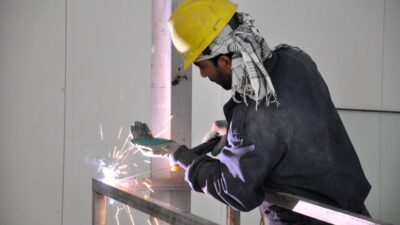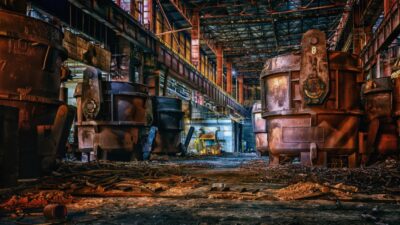Carpentry is one of the oldest professions mankind has ever done. Carpentry comes from the Latin term carpentrius which stands for ‘carriage maker.’
Carpenters are highly skilled craftsmen that build furniture, homes & buildings, sets for theatres & television studios, docks & wharves, windows & cabinets, among other things.
Carpenters are classified as either rough carpenters or finishing carpenters. Rough carpenters perform, as the name implies, rough construction jobs such as framing residential & commercial buildings, roofing, shipbuilding, etc.
Finishing carpenters on the other hand build & design furnitures of all sorts. How are carpenters at risk of asbestos exposure? Through the 20th century, carpenters worked with various different construction products that contained asbestos.
Because of the properties of asbestos as an insulation agent against heat, fire and its durability, it was used in construction products to prevent the breakout of fires.
Picture of finishing cement that contains asbestos Any rough carpenters or those working around ships as well as framers & roofers were at even increased risks of asbestos exposure.
Finishing carpenters on the other hand, those who primarily built & designed furniture were not as highly risked as their counterparts; rough carpenters due to the nature of the jobs. Examples of asbestos containing products used in the carpentry & construction industry include:
- Felt, adhesives, shingles & other roofing materials
- Patching plasters or fibers
- Agricultural fillers & asbestos cords
- Cement Siding
- Cement Wallboard
- Millboards
- Rollboards
- Flatboards
- Finishing cement
- Acoustic plasters & finishers
- Furnace Cement
- Machine Room Ducts
- Machine Room Ceillings
- Machine Room Floors
- Machine Room Walles
Consumer product safety commissionIn 1977, the Consumer Product Safety Commission (CPSC) was introduced. The objective of the CPSC is to ‘protect the public against unreasonable risks of injuries and deaths associated with consumer products.’
It has control over 15000 different consumer products and monitors the safety of using such products. This commission banned the use of asbestos in any new consumer products manufactured, however existing products on the market that contained asbestos were floating around freely.
This is why carpenters may have been exposed to asbestos on their jobs through the early 1980s. Until the late 1970s, very few companies provided their workers with safety gear to protect themselves from asbestos exposure.
This resulted in 1000s of American construction workers being exposed to Asbestos fibers on a daily basis. It is only know that carpenters realize they have developed deadly diseases such as Asbestosis or Mesothelioma lung cancer.
Case Study – Long Beach Naval Shipyard (World War II)
Photo of the Long Beach Naval Shipyard used in World War IIThe image on the left is of the Long Beach Naval Shipyard located at south side of Terminal Island, on the Roosevelt Naval Base, between San Pedro and Long Beach, California.
Between 1930s to 1945s, the shipbuilding industry in America saw a tremendous growth due to the need for sophisticated ships in World War II.
Long Beach Naval Shipyard was a very important site for the American government due to its closeness to the ocean and its surroundings by other shipyards.
Through World War II, this facility housed over 400 ships that needed repair, overhauls & conversions; employing over 15000 shipyard workers. Some of the job duties included:
- Pipefitting
- Sandblasting
- Woodworking
- Welding
- Rigging & insulation
Asbestos was widely used @ the Long Beach Naval Shipyard to provide insulation against fire breakouts as well as other products boiler coats, boiler insulators, pumps, machine room ducts, marine panels, Vermiculite Compounds, etc.
dr. Maryama













